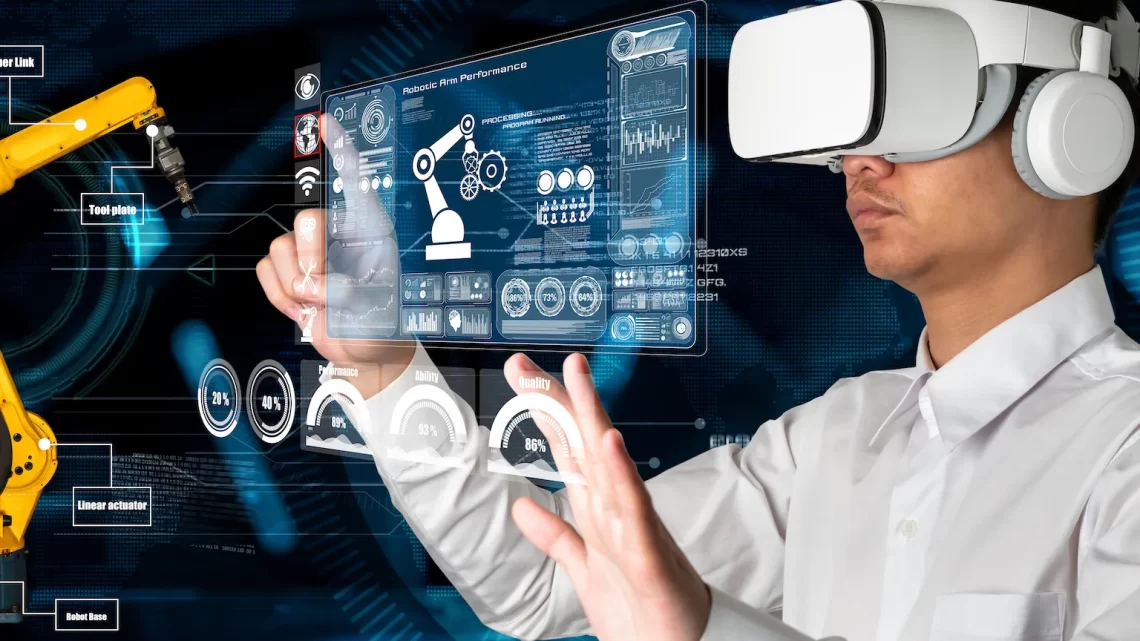
Understanding Augmented Reality and Its Practical Uses
January 10, 2024Augmented reality involves overlaying virtual elements onto a mobile device’s view of the real world. These virtual elements can be generated through simple software processing or more advanced technology like image and object recognition.
Using AR, museums can immerse visitors in a vanished culture or ancient setting. Portal technology can transport them to remote locations as well.
Education
Augmented reality is being used in education to create immersive learning experiences that improve student interaction and knowledge retention. From teaching students about the structure of the human body through a virtual 3D skeleton, to helping them visualize how protons, neutrons and electrons work in an atom, AR applications are transforming education across all subjects.
AR in higher education helps to bridge the gap between theoretical knowledge and real-world application by overlaying virtual elements on real-world environments. From designing buildings through AR-enabled CAD software to practicing medical procedures on virtual patients, students can learn and practice in immersive environments that will prepare them for their future careers and the challenges of life outside the classroom.
Students are also able to interact with cultural experiences through AR-based learning platforms like Experience Real History, World Brush and Curiscope. Students can explore museums, spend a day at the ballet or even travel to different countries without leaving their classrooms.
Entertainment
Augmented Reality is one of the hottest new technologies in entertainment and it’s transforming how music is heard, stories are told, and people interact with their favorite characters. AR delivers visual elements, sound and other sensory information to users through their device like a smartphone or glasses, allowing digital information to be interwoven with the user’s real-world experience.
AR is used in a variety of ways in the entertainment industry including displaying the lyrics to a song as it’s being performed at a concert, allowing movie theater audiences to choose their own camera angles during a film, and creating more realistic and immersive video game experiences.
Entertainment AR also enables brands to engage with their fans in new and exciting ways. For example, using a phone to create a portal allows users to enter the ‘Cave of Wonders’ from Aladdin the Musical and rub the lamp to conjure the Genie. This type of AR entertainment is both a delight to use and share, which can help to drive word-of-mouth sharing and ticket sales.
Healthcare
When it comes to the healthcare industry, AR and VR are helping to improve patient rehabilitation, doctor training, and even the delivery of some clinical services.
For example, patients with certain conditions can learn more about their condition by interacting with AR models of the body in motion. Similarly, doctors can use AR to practice surgical procedures on simulated cadavers to get a feel for the procedure before it’s performed on a real human being.
Technicians can also benefit from AR by overlaying instructions on equipment, and researchers can do the same with their experiments. Moreover, emergency workers can use AR to visualize the perspective of a disaster scene and access remote information about the location of lifesaving equipment, such as automated external defibrillators (AEDs). Articles were grouped into 3 categories based on the task performed using AR: patient evaluation, medical intervention, and education. The latter 2 groups were further subdivided based on whether the task was surgical or nonsurgical.
Business
From oil companies to hairdressers, business owners are leveraging AR to solve real-life problems and attract customers. Mobile AR is the most viable option for businesses because it can be used by anyone with a smartphone or tablet.
The possibilities for augmented reality in business are endless. It can enhance marketing and advertising with interactive maps, product information, videos, and virtual models. It can also help employees by training them to perform tasks without risking physical injury or damage to equipment. It can even enable physicians to practice a surgery before performing it on a patient.
AR can also aid in the assembly and inspection of products in manufacturing. Using AR to visualize a digital model of the ideal product can help streamline the work process. And it can make sure the finished product is free from flaws and defects that might have slipped past inspection. This can significantly boost productivity. It can also improve customer satisfaction and loyalty.




